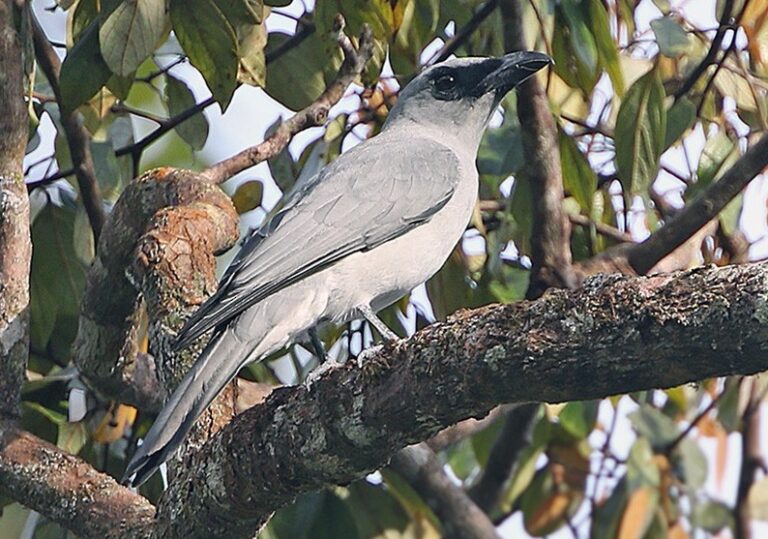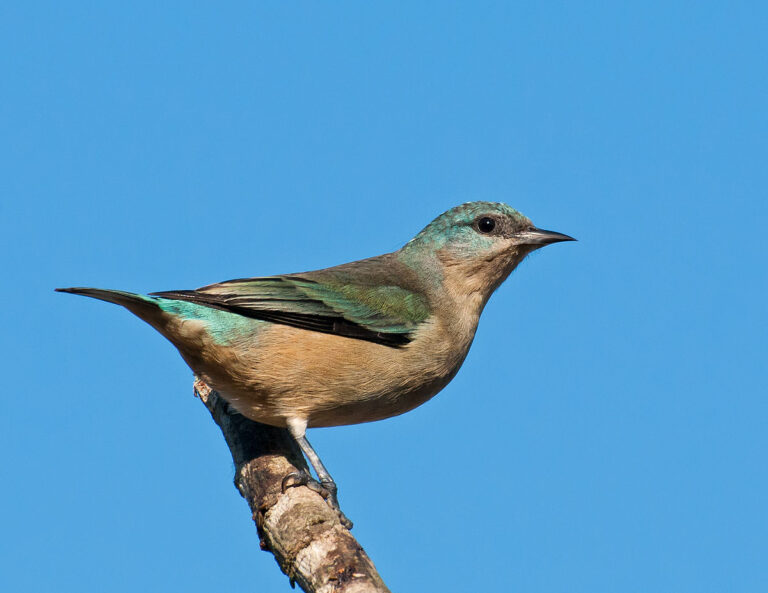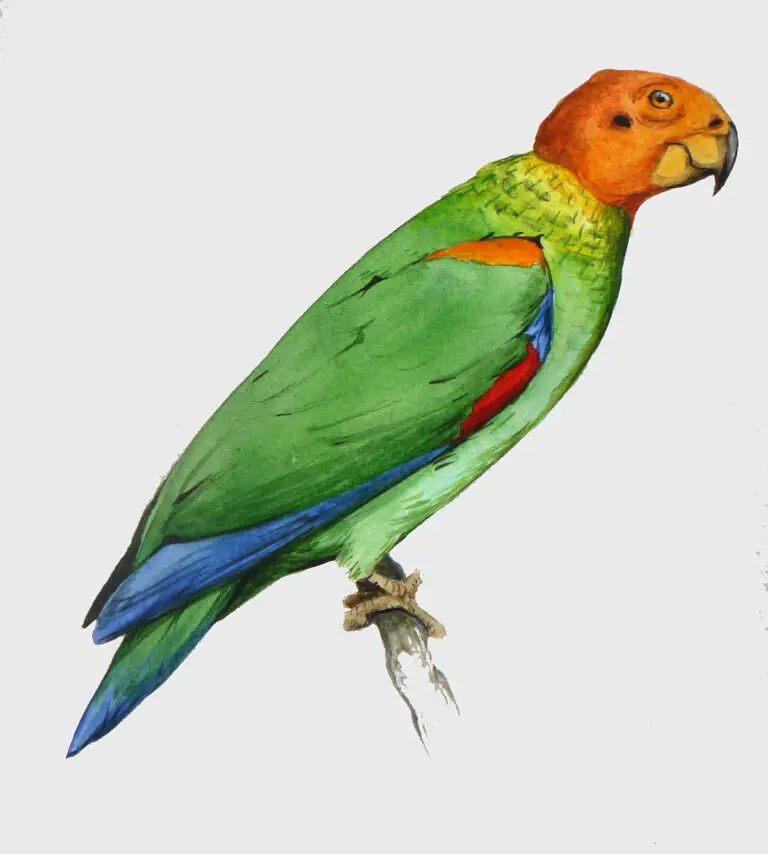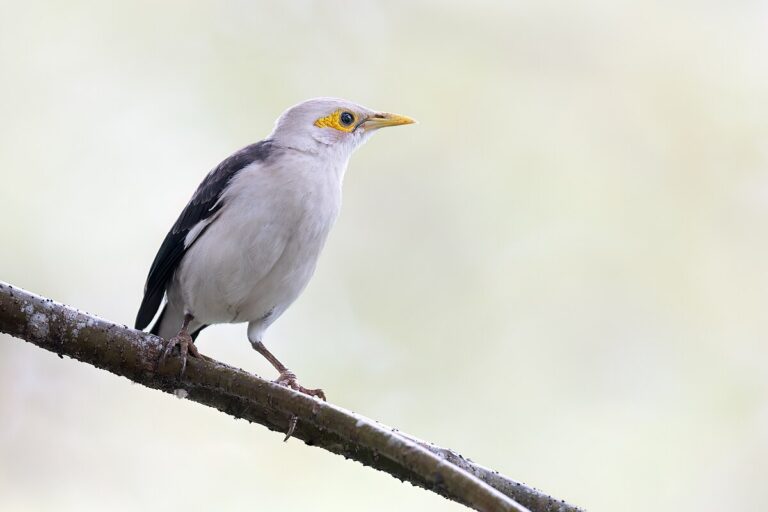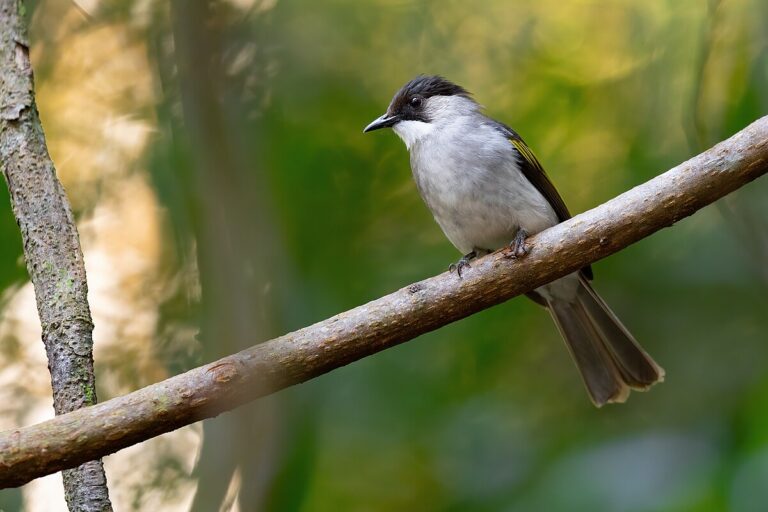Anole Lizard Latest Facts & Pictures
Scientific Classification
[table id=7 /]
“There are just under 400 species, several of which change color.”
The Anole Lizard (genus Anolis) is a diverse and widespread group of lizards found primarily in the Americas. Here is the scientific classification and other details for the Anole Lizard:
Conservation Status
- Status: Least Concern
Locations
- Regions: Central America, North America
The Anole Lizards are known for their adaptive radiation, especially in the Caribbean, where different species have evolved to occupy specific ecological niches. They are also notable for their ability to change color, though not all species have this trait. Anoles are commonly found in a variety of habitats, including forests, grasslands, and urban areas.
Anole Lizard Facts
Common Name: Anole Lizard
Other Names: American green anole, Carolina green anole, American anole, Carolina anole, North American green anole, red-throated anole, American Chameleon
Scientific Classification:
- Kingdom: Animalia
- Phylum: Chordata
- Class: Reptilia
- Order: Squamata
- Family: Dactyloidae
- Genus: Anolis
Conservation Status: Least Concern
Locations: The Americas (Central America, North America)
Group: Territorial
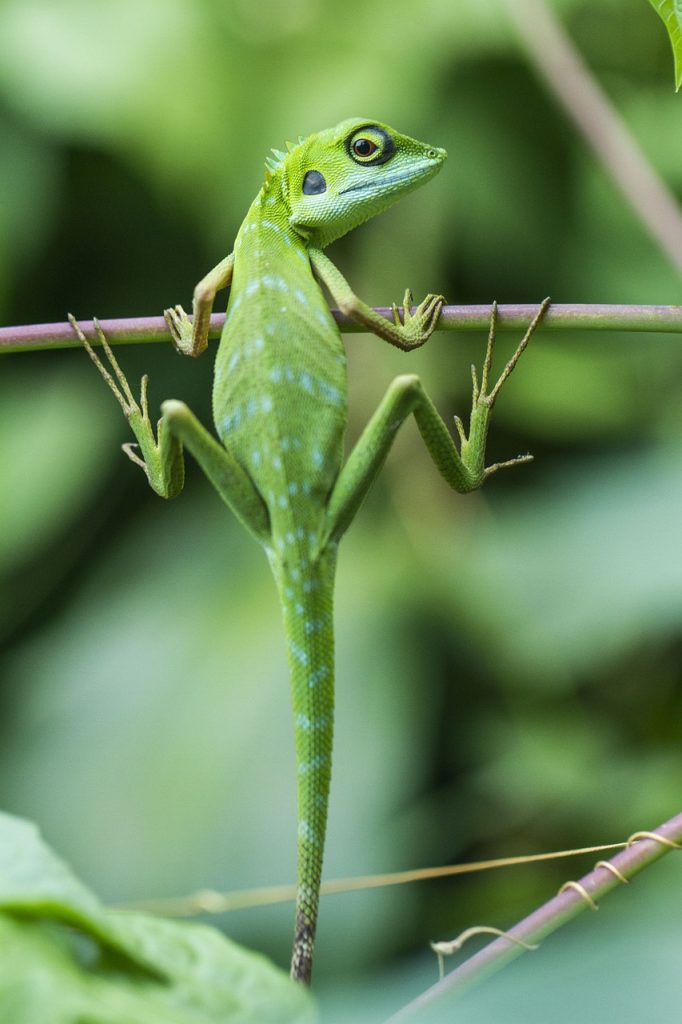
Physical Characteristics
- Color: Brown, Red, White, Tan, Green
- Skin Type: Scales
- Lifespan: 2 – 7 years
- Height: 0.5 in. – 2 in.
- Length: 4 – 20 in.
- Age of Sexual Maturity: 18 months
Behavior and Ecology
- Diet: Omnivore
- Prey: Insects
- Predators: Snakes, other reptiles, birds
- Biggest Threat: Other reptiles
- Most Distinctive Feature: Brightly colored dewlap on the neck of the males
- Litter Size: 1 – 2 eggs
- Name of Young: Hatchlings
Fun Fact
- There are just under 400 species of Anole Lizards, several of which have the ability to change color.
The term “Anole Lizard” encompasses over 400 species of mostly color-changing lizards found primarily in South and Central America.
One of the most delightful inhabitants of North American gardens is the small green anole lizard. These curious and occasionally friendly creatures, with their vibrant green coloration, can often be spotted darting across deck rails or peeking out from flower pots. They hunt for moths among the begonias and snatch flies with lightning-fast precision, adding a touch of lively charm to any garden.
Facts About Anole Lizards
- Color Change: Green Anole lizards can change their color from green to brown. Most anole species have some degree of color-changing ability.
- Dewlap: Most male anoles have a brightly colored dewlap, used for mating displays and marking territory.
- Species Diversity: There are around 400 species of anole lizards, with about 150 species found in the Caribbean islands.
- Size: Some anole species can grow up to 20 inches long.
- Sexual Dimorphism: Males and females of anole species often differ in appearance, including the presence of the male’s dewlap.
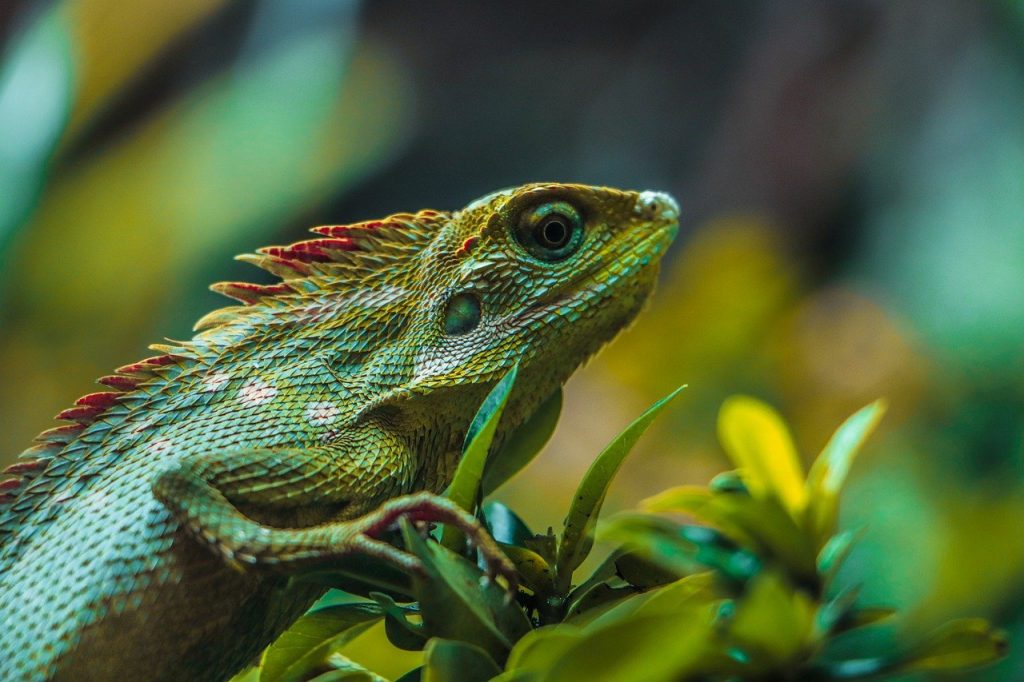
Species
Anoles belong to the family Dactyloidae under the Class Reptilia. With over 400 species collectively known as Anolis, it’s impractical to list all their scientific names here. Here are some notable subspecies:
Green Anole (Anolis carolinensis)
- Habitat: Tree-dwelling
- Native Region: Southeastern United States
- Size: Small to medium
- Color Change: Can change from green to brown
Brown Anole (Anolis sagrei)
- Habitat: Ground-dwelling
- Native Region: Cuba and the Bahamas
- Introduced Regions: Southern United States, Hawaii, California
- Impact: Invasive species that outcompetes and affects native species like the Green Anole, forcing them to treetops
Knight Anole (Anolis equestris)
- Native Region: Cuba
- Size: Up to 20 inches (largest anole)
- Diet: Insects, snails, occasionally small birds and lizards
Cuban Blue Anole (Anolis caliensis)
- Native Region: Cuba
- Other Locations: Bay Islands, Cayos Cochinos (Honduras), Half Moon Caye (Belize)
- Size: 3 – 4 inches
- Diet: Invertebrates
- Habitat: Prefers palm trunks
- Reproduction: Females lay eggs together in communal nests
Horned Anole (Anolis allisoni)
- Other Name: Pinocchio Lizard
- Habitat: Small stretch of vegetation along an Ecuadorian highway
- Size: 2 – 3 inches (excluding tail); males slightly larger
- Distinct Feature: Males have a 2 cm (0.8 in) proboscis used in courtship displays
- Conservation Status: Endangered
Appearance
Anole lizard species exhibit variations in size and color, influenced by factors like habitat, climate, and diet. These adaptations are crucial for their survival and hunting strategies. For instance, some species have large hind legs, facilitating long-distance jumps to catch prey, while others may have short, stubby legs suited for slow, stealthy movement in tree habitats to avoid predators.
Their coloration spans a spectrum of greens, browns, yellows, and occasionally blues, reflecting their diverse environments. However, the most common colors are shades of green and brown.
Male anoles often possess a dewlap, an erectile tissue on the neck that can be extended into a semi-oval shape. This dewlap serves various purposes, including mating displays and territorial signaling. Interestingly, the color of the dewlap can vary greatly from the lizard’s body color and may encompass a wide range of hues.
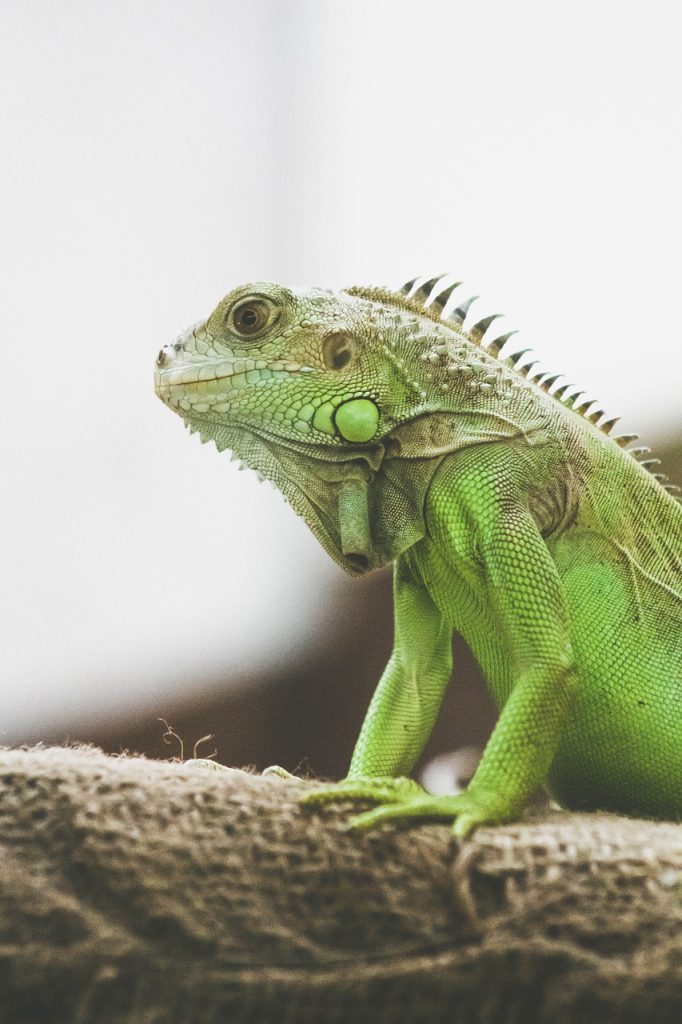
Behavior
Anoles are primarily solitary creatures, often living in proximity to one another but not forming social groups. Male anoles become fiercely territorial during sexual maturity, aggressively defending their territory against intruders. However, outside of this period, they tend to be docile and may exhibit varying degrees of tolerance towards humans.
Their behavior is highly adaptable and influenced by their environment. Depending on where they reside, anoles may develop different behavioral adaptations to survive and thrive in their surroundings.
Evolution
The ancestors of the green anole lizard originated in Cuba before spreading to the southeastern United States. These small, green lizards have since become popular in pet stores and have recently become the focus of numerous evolutionary studies.
While the evolution of animal species typically unfolds over thousands of years, there are instances where it occurs rapidly, driven by urgent needs. The North American green anole presents a compelling example of such rapid evolution, where adaptation became a matter of survival.
As the sole anole species native to the United States, green anoles historically inhabited the base of trees, thriving on the abundance of insects found there. However, in the 1950s, brown anoles were introduced into the country, proving to be highly invasive. This led to a swift displacement of green anoles from their forest floor habitat to higher branches, prompting a rapid evolutionary response.
Rather than facing extinction, the green anoles embarked on a remarkable journey to adapt to their changing environment. They transitioned to life in the trees and higher elevations, becoming adept climbers and discovering new hunting grounds. Astonishingly, within just 20 generations spanning 15 years, the green anoles evolved larger toe pads adorned with more adhesive scales, facilitating easier climbing. Scientists attribute this phenomenon to “character displacement,” an evolutionary process where closely related species diverge to exploit separate ecological niches.
Further research has highlighted the resilience of these small lizards. Some studies have revealed their increased tolerance to colder temperatures, likely stemming from their survival during extreme cold snaps in certain regions. Additionally, urban-dwelling anoles have evolved stickier feet, aiding them in scaling buildings with ease. As a species, green anoles have demonstrated a remarkable ability to adapt and thrive in response to environmental challenges.
Habitat
Anole lizard species predominantly inhabit tree-dense environments, with preferences varying from residing near the base to favoring the smaller branches closer to the canopy. Their hunting strategies adapt accordingly to their chosen habitats.
These versatile lizards can be spotted in various locations, including bushes, reeds, low limbs, tree trunks, and forest canopies. They inhabit a wide range of ecosystems, from farms and residential yards to diverse natural settings such as rainforests, dry forests, arid scrublands, grasslands, and riverside vegetation. Their ability to thrive in such diverse environments underscores their adaptability and widespread distribution.
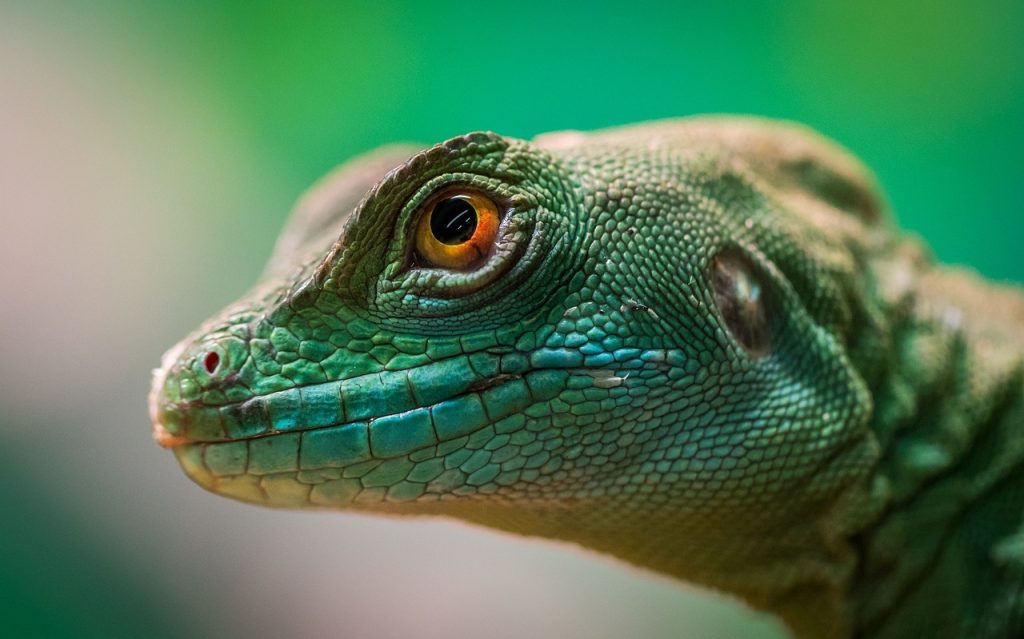
Diet
Anoles are primarily insectivores, meaning they mainly feed on insects. Their diet typically consists of insects, spiders, and other invertebrates. However, some anoles also supplement their diet with vegetation and nectar. They may occasionally consume tree sap, rotted fruit, and even small lizards, snakes, or eggs, particularly larger species. This dietary flexibility allows them to adapt to various food sources available in their habitats.
Predators and threats
Anoles face various threats in their natural habitats, including predation from other anoles. For example, in shared habitats, Brown Anoles have been known to prey on Green Anoles and their eggs. Additionally, anoles are targeted by larger reptiles, snakes, predatory birds, and occasionally small mammals.
Their ability to change color provides them with some defense against predators by allowing them to blend into their surroundings. However, they become more vulnerable during mating seasons when they increase their movements and display brighter colors to attract mates. This heightened activity and conspicuous appearance can make them more susceptible to predation during these times.
Reproduction and Life Cycle
When male anoles reach sexual maturity, they engage in behaviors to attract mates. They often display their dewlap, a piece of erectile tissue on their neck, and perform what appears to be push-ups. These displays serve dual purposes: attracting potential mates and asserting dominance over competing males by showcasing strength.
Both male and female anoles are polyamorous, meaning they mate with multiple partners throughout their lifetimes. However, males typically defend a singular territory to ensure exclusive access to females within that area.
While males maintain territorial boundaries, females roam outside these territories and mate with multiple males. After mating, females lay one or two eggs, often on a daily basis throughout the mating season. These eggs hatch into baby anoles, which are typically around 0.75 inches in size. Baby anoles reach sexual maturity at approximately 18 months of age and have a lifespan of brown anole lizard two years in the wild and up to seven years in captivity.
Population
Anole populations can vary significantly between species, with some species thriving while others face extinction threats. For example, Green Anoles are estimated to have a population of around 100,000 specimens or more, indicating a relatively healthy population size.
On the other hand, species like the Blue Anole are much rarer, with population numbers dwindling to the point where they may be on the brink of extinction. The declining population of Blue Anoles underscores the importance of conservation efforts to protect and preserve vulnerable species from disappearing altogether.
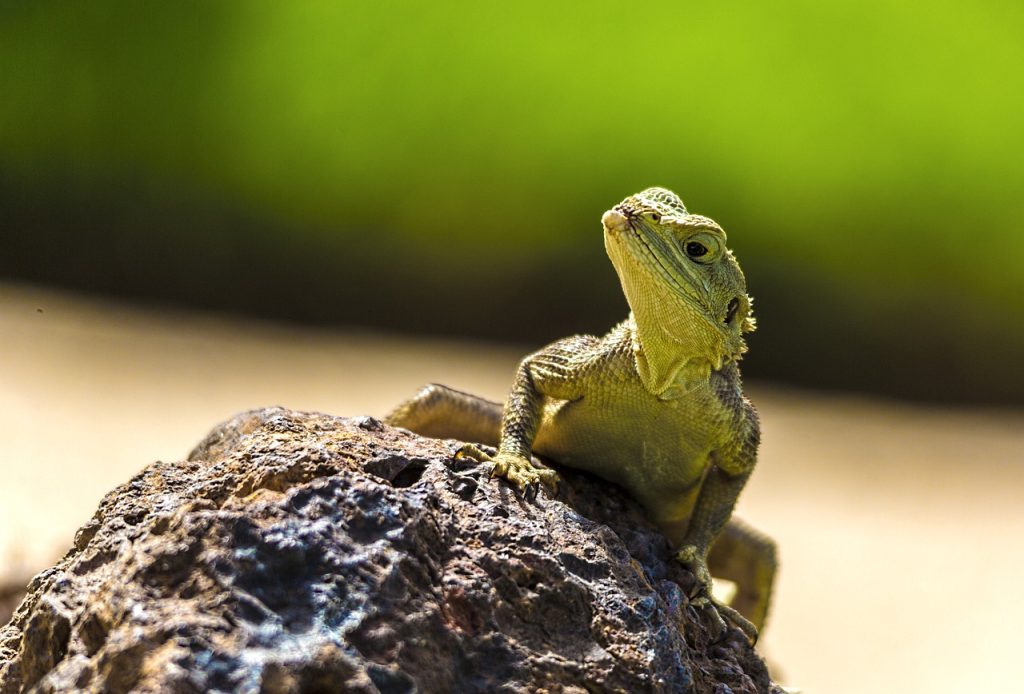
Conclusion
Anole lizards green anole lizard are a diverse and fascinating group of reptiles found primarily in the Americas. With over 400 species, they exhibit a wide range of adaptations, behaviors, and ecological roles. From their remarkable color-changing abilities to their diverse habitats and mating behaviors, Anole lizards captivate scientists and enthusiasts alike. However, they also face threats such as habitat loss, predation, and declining populations in some species. Conservation efforts are crucial to ensure the continued survival and biodiversity of these remarkable creatures.
anole lizard texas
anole lizard care
cuban anole lizard
anole lizard florida
anole lizard lifespan
blue anole lizard
anole lizard eggs
knight anole lizard
female anole lizard
water anole lizard
anole lizard for sale
anole lizard habitat
full size green anole lizard
anole lizard diet
anole lizard egg
anole lizard pet
anole lizard hawaii
green anole lizard care
green anole lizard lifespan
rainbow blue anole lizard
baby anole lizard
male anole lizard
anole lizard food
baby green anole lizard
anole lizard south carolina
black anole lizard
brown anole lizard florida
florida anole lizard
anole lizard poop
full grown anole lizard
anole lizard bite
anole lizard drawing
anole lizard evolution
anole lizard eating
green anole lizard habitat
brown anole lizard texas
green anole lizard life span
anole lizard size
red anole lizard
anole lizard brown
pregnant anole lizard
green anole lizard eggs
anole lizard petsmart
green anole lizard florida
pet anole lizard
anole lizard change color
green anole lizard eating
carolina anole lizard
sick anole lizard
green anole lizard pet
anole lizard laying eggs
green anole lizard diet
what do green anole lizard eggs look like
green anole lizard texas
anole lizard neck flap
blue:muvq-cxevwy= anole lizard
anole lizard tank size
anole lizard dewlap
anole lizard videos
green anole lizard food
cuban knight anole lizard
what to feed anole lizard
brown anole lizard care
boy eats anole lizard
anole lizard feeding
anole lizard adaptations
green anole lizard information
anole lizard baby
big anole lizard
green anole lizard size
anole lizard facts
baby anole lizard food
anole lizard supplies
giant anole lizard
anole lizard for sale uk
green anole lizard care sheet
anole lizard as a pet
anole lizard terrarium
anole lizard tank
green anole lizard for sale
bahaman anole lizard
anole lizard price
what is an anole lizard
king anole lizard
brown anole lizard eggs
full size:i4lwxidapni= green anole lizard
anole lizard life cycle
anole lizard resource partitioning
baby brown anole lizard
green anole lizard turning brown
will my green anole lizard eat its own shedded skin
anole lizard color change
my dog ate an anole lizard
brown anole lizard bite
anole lizard colors
green anole lizard, trinity
anole lizard with red throat
